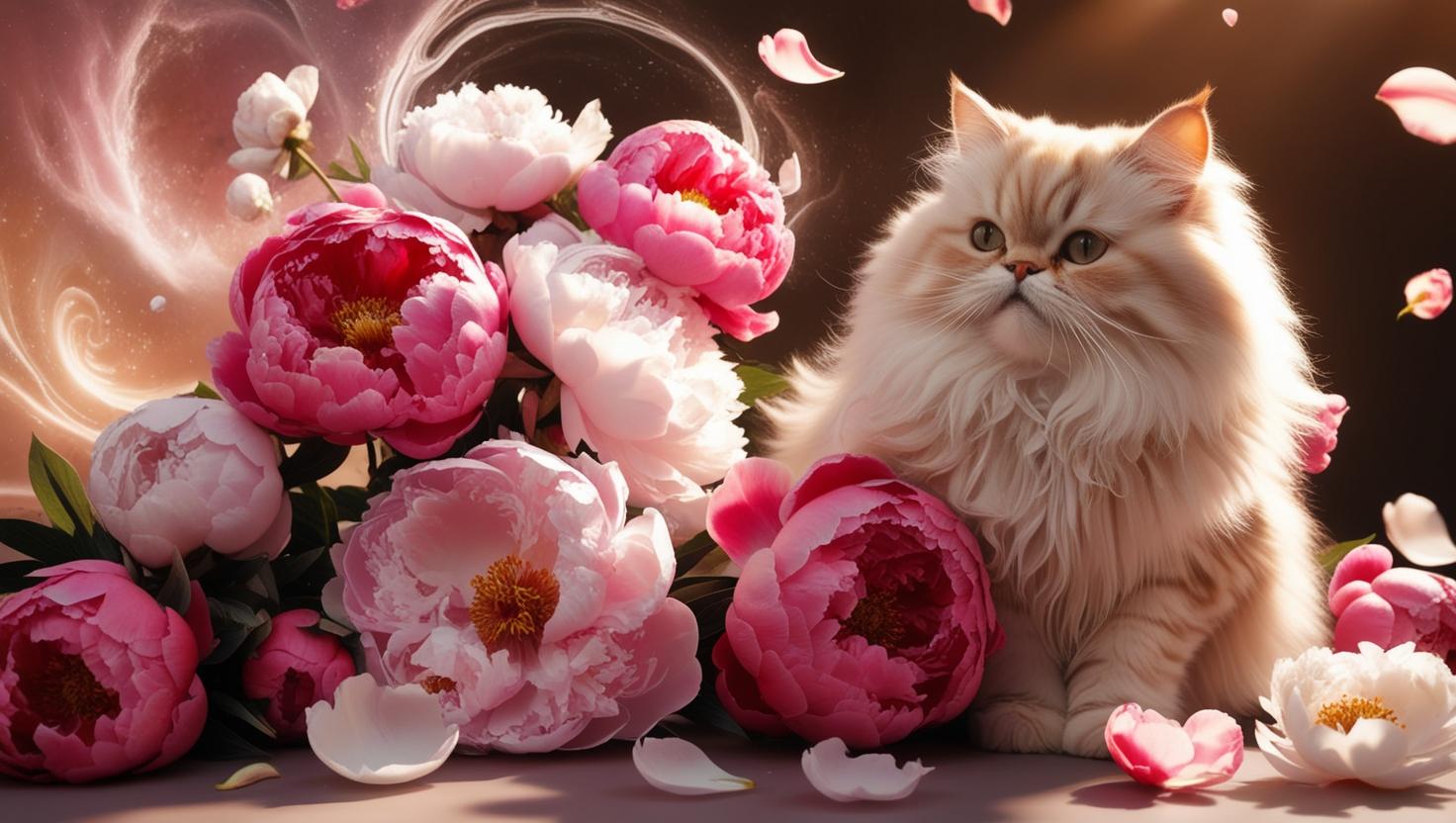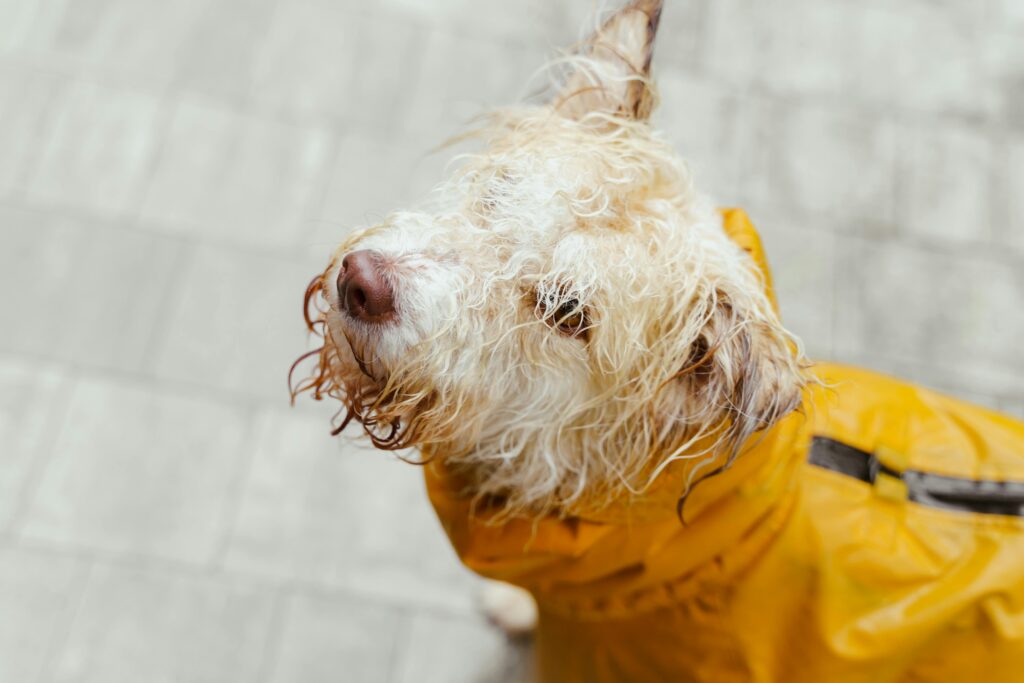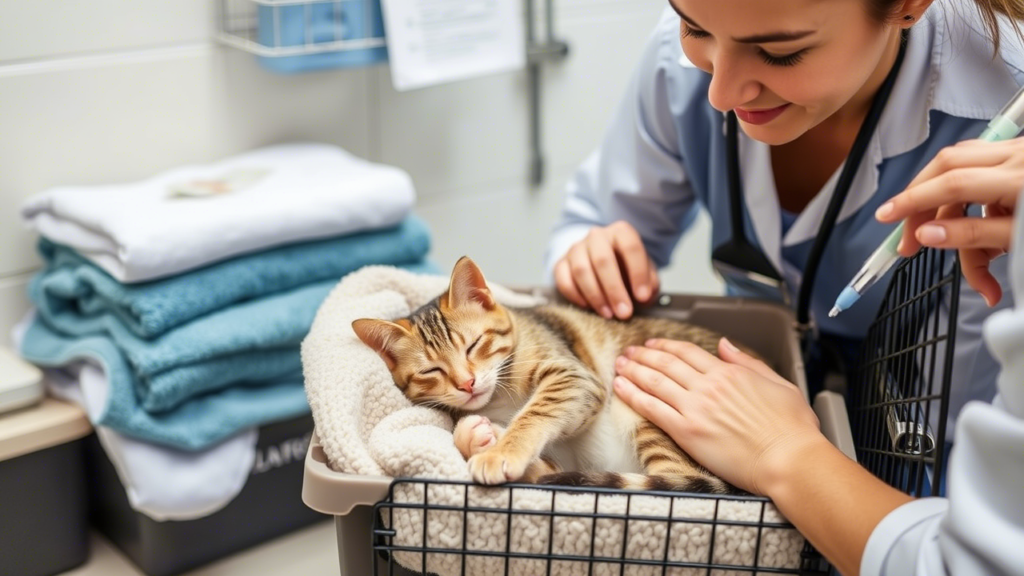Introduction:
The Beauty of Peonies and Their Potential Dangers to Cats
Peonies are beloved for their lush blooms and vibrant colors, making them a popular choice for gardens and floral arrangements. Their enchanting beauty can transform any space into an elegant and serene environment. However, if you’re a cat owner, it’s essential to understand that not all plants are safe for your feline companions.
Cats are innately curious animals, and they always seem to investigate everything around them by chewing on plants. While this is harmless with plants that are nontoxic, some flowers, like peonies, can be toxic. Peonies are mildly toxic to cats and can cause discomfort or illness if ingested.
In this article, the focus will be on what makes peonies poisonous, the signs and symptoms of poisoning, emergency procedures, and safer options for a cat-friendly garden and home.
Are Peonies Poisonous to Cats?
What Makes Peonies Harmful to Cats?
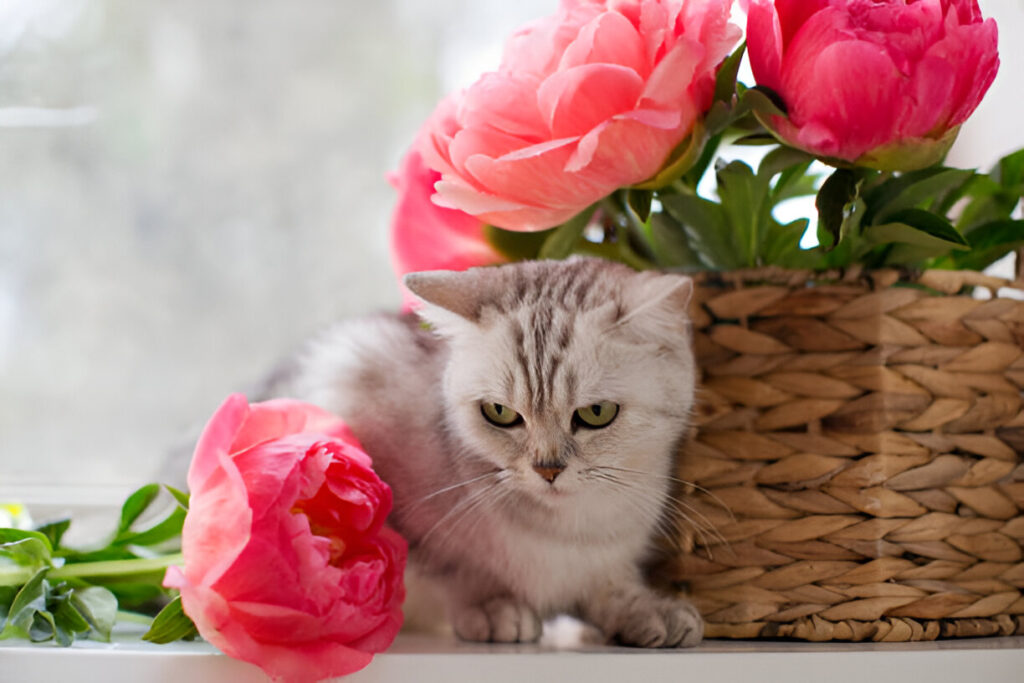
Peonies of the genus Paeonia have a toxic principle called paeonol. It is mostly distributed within the bark, but sometimes it is expressed in petals and leaves. In themselves, paeonol has light toxic effects on cats. Being ingested causes gastrointestinal irritation.
Important Factors Contributing to Peony Toxicity:
Toxic Chemicals: The toxic compound Paeonol acts upon the lining of the stomach and causes symptoms that include vomiting and diarrhea.
Parts of Plant:
While most of the paeonol is concentrated in the bark, the flowers and leaves of the plant are toxic, too.
Toxicity Level:
The overall toxicity level of peonies is low. That does not mean mild symptoms will not be frustrating for you and your pet, and larger amounts can cause more serious reactions.
Why Are Cats Attracted to Peonies?
Cats bite peonies because they are curious or bored. Some cats like the texture of the petals, and others simply investigate anything that surrounds them. Knowing this behavior is already a way to keep your pet safe.
Symptoms of Peony Poisoning in Cats
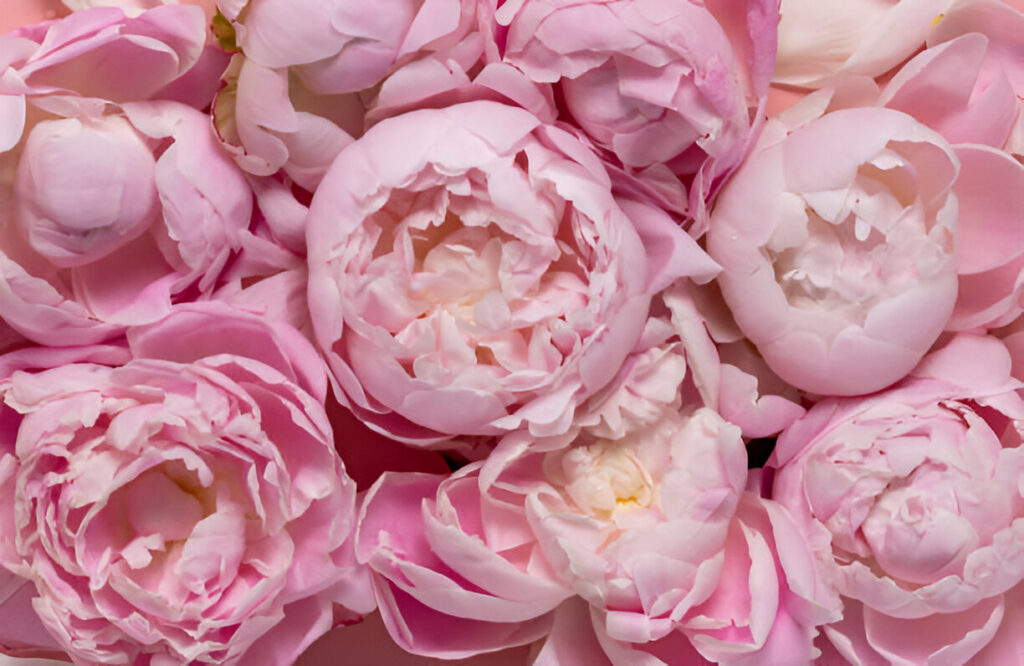
Are Peonies Poisonous to Cats?
Symptoms of Peony Poisoning in Cats
If your cat ingests any part of a peony plant, it’s essential to monitor them closely for signs of toxicity. The symptoms may vary depending on the amount consumed, the part of the plant ingested, and your cat’s overall health. Here’s a detailed breakdown of what to watch for:
Gastrointestinal Distress
The most common symptom of peony poisoning in cats is gastrointestinal distress.
- Vomiting:
- Cats may vomit repeatedly as their bodies try to expel the toxic compounds.
- Vomit may contain plant material, froth, or bile, which would show irritation of the stomach lining.
- Continuous vomiting results in dehydration and exacerbates the condition.
- Diarrhea:
- The paeonol present in it can irritate the intestine, causing loose or watery stools.
- Diarrhea results in a loss of body fluids and also causes an electrolyte imbalance if left untreated.
- Loss of Appetite:
A poisoned cat may refuse to eat their favorite food, for example. This can be an early symptom of the development of unease and could also be in company with other symptoms.
- Salivation:
The cats start drooling profusely as a result of nausea or irritation in the mouth after chewing the plant.
- Drooling can also be a response to an unpleasant taste or texture of the peony.
Lethargy
Cats suffering with peony poisoning are often lethargic because of the unrest caused by the toxic compounds.
- Unusual Fatigue:
- Your normally active and playful cat might spend an inordinate amount of time lying down or sleeping.
They may become lethargic and lose interest in things that usually excite them.
- Reluctance to Move or Play:
- Poisoned cats may refuse to play or move due to pain and nausea.
- The symptom can also manifest itself as a result of dehydration and weakness caused by diarrhea and vomiting.
Behavioral Changes
Peony poisoning can also extend to your cat’s behavior, whereby the cat may react to the discomfort and stress brought about by the toxic compounds.
- Increased Hiding:
- Cats have an innate nature of hiding when they feel unwell or at a disadvantage.
- You may find your pet going to quiet or dark areas, like under furniture or in closets.
- Restlessness or Discomfort:
Some cats will exhibit restlessness, such as pacing, appearing agitated, or pacing around. Others may paw at their mouths or faces as if trying to comfort an irritated or nauseous sensation.
What is the Timeline of Symptoms?
Symptoms begin to appear a few hours post-consumption but may depend on certain variables:
- Amount Consumed:
Small nibbles of a petal or leaf might result in mild symptoms, while consuming larger amounts, such as multiple petals or stems, can cause more severe distress.
- Part of the Plant Ingested:
- Toxic compounds are in their highest concentration in the peonies’ bark and roots, which presents more danger than flowers or leaves.
- Size and Sensitivity of Cat
- The size and sensitivity of a cat: The smaller the cat, or one that may have kidney and liver issues, could have symptoms develop more rapidly and severely.
- Healthy, larger cats may have delayed or milder symptoms.
- General Health and Age:
- Kittens and senior cats are generally more sensitive to toxins and might show symptoms earlier than cats in the prime of their lives.
The first few hours after ingestion are the most critical period of time to monitor your cat; early detection of symptoms can make quite a bit of difference in treatment and recovery. If the symptoms worsen or persist, prompt veterinary care will be needed.
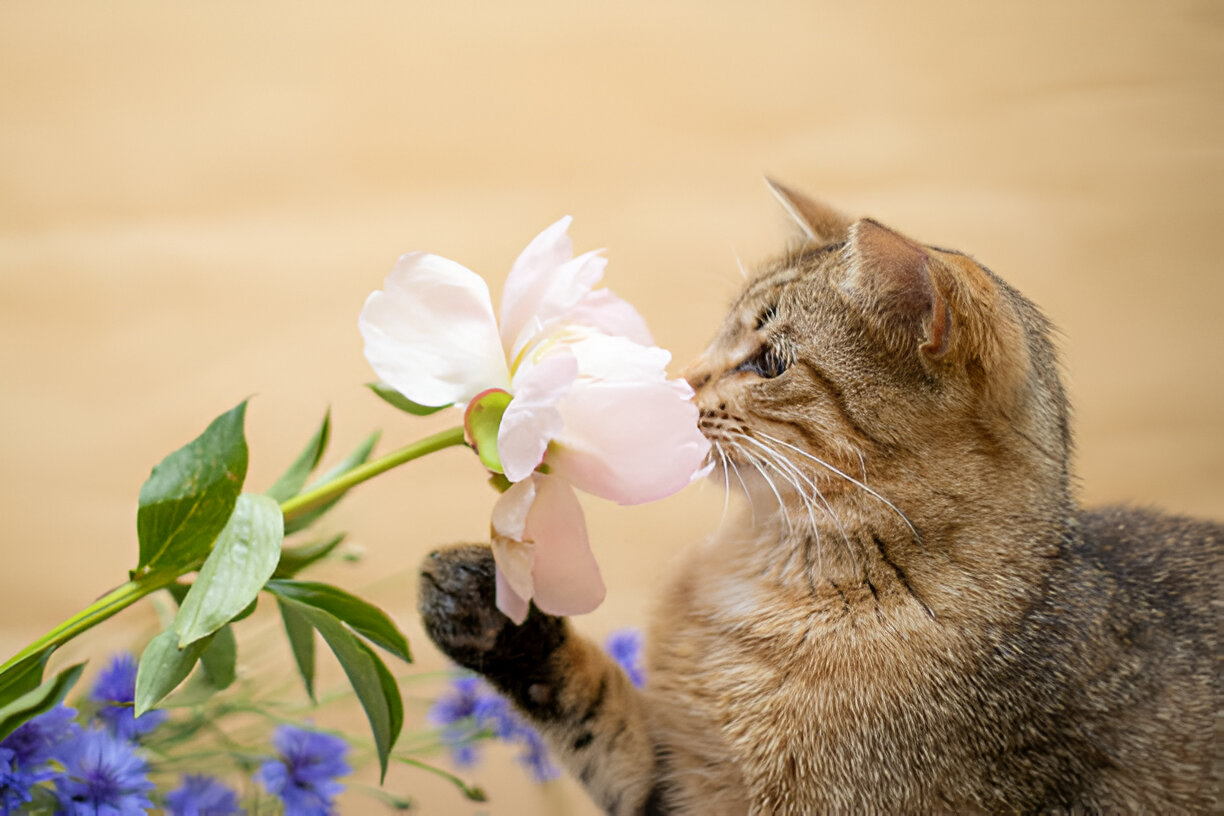
First Aid and Treatment if Your Cat Ingests Peonies
Are Peonies Poisonous to Cats?
First Aid and Treatment if Your Cat Ingests Peonies
If you suspect that your cat has ingested any part of a peony plant, the sooner you act, the greater the chance of preventing complications. While peony poisoning is not considered fatal, it could cause severe discomfort and health risks if not treated in time. Here’s a step-by-step guide on what to do:
Step 1: Withdrawal of Access to the Plant –
- What to Do: Immediately take your cat away from peony to avoid continued ingestion.
- Why It’s Important: Cats will keep nibbling on the plant when it’s available, and their exposure to toxic compounds increases this way.
- Pro Tip: Consider placing the plant in a room or area inaccessible to your pet to avoid future incidents. If the plant is outdoors, create barriers or relocate your cat to a safer part of the yard.
Step 2: Check for Symptoms
- Action: Observe your cat for any signs of distress, including vomiting, diarrhea, lethargy, excessive drooling, or unusual behavior.
- What to Look For:
- Vomiting or retching
- Diarrhea or loose stools
- Loss of appetite
- Excessive hiding or restlessness
- Why It’s Important: Early identification of symptoms will help establish the severity of the situation and provide guidance for next steps.
Step 3: Contact Your Veterinarian
- Action: Reach out to your vet as soon as possible, even if symptoms seem mild or haven’t yet appeared.
- What to Tell the Vet:
- The type of plant ingested (peony)
- The part of the plant (flower, leaves, stem, or root)
- The estimated amount consumed
- Any symptoms you’ve observed
- Why It’s Important: Your veterinarian can assess the potential risk and advise on immediate actions, including whether an emergency visit is necessary.
Step 4: Follow Veterinary Instructions
- At-Home Care: Your vet may recommend certain steps to help mitigate the effects of the toxin before professional treatment. This might include:
- Fresh Water Provision: Let your cat drink water to eliminate the toxins. Do not forcefully give water to your cat if it is showing resistance, as this may stress them even more.
- Observation of Symptoms: Observe your cat’s symptoms and condition keenly.
- Emergency Care: In cases of severe symptoms or if a large amount of the plant was ingested, you may be advised to bring your cat in for care.
Veterinary Treatment Options
When professional care is required, your veterinarian has several options during the treatment of peony poisoning:
1. Induced Vomiting
- Purpose: To rid the stomach of any undigested plant material.
- When It’s Done: Typically done shortly after ingestion if the cat hasn’t vomited on its own yet.
- Procedure: This should be safely done under a vet’s supervision because inducing vomiting at home can be dangerous.
2. Activated Charcoal
- Purpose: binds and absorbs toxins within the gastrointestinal tract to prevent further absorption into the bloodstream.
- How It’s Administered: Activated charcoal is administered orally in a carefully measured dosage.
3. Fluid Therapy
- Purpose: This helps prevent or treat dehydration that results from vomiting or diarrhea. Fluids help toxins be moved out of the system faster.
- Method: Fluids are given through IV or subcutaneously, according to the condition of the cat.
4. Medications
- Anti-Nausea Drugs: Vomiting can be controlled and nausea reduced.
- Gastrointestinal Protectants: Coating agents or antacids may be prescribed to soothe the lining of the stomach and reduce irritation.
- Pain Relief: If the ingestion caused enough abdominal discomfort, your vet might prescribe mild pain relievers suitable for cats.
5. Monitoring and Supportive Care
Observation: In worse conditions, your cat may be required to stay in the hospital for observation, especially when your cat has been dehydrated or shows persistent symptoms. Nutritional Support: When a cat loses their appetite, a high-calorie paste or liquid nutrition may be recommended to the veterinarian in order to maintain their energy levels.
Prevention After Treatment
If your cat has recovered from peony poisoning, it’s time to take some measures to prevent recurrence:
- Remove all toxic plants from your home and garden, or place them in areas inaccessible to your cat.
- Choose pet-safe plants to decorate your home or garden.
Educate yourself and the members of your household about other common plants toxic to cats, including lilies, tulips, and azaleas. Periodically inspect your house for new hazards, especially if you are bringing in new flowers or plants. Most cats recover from peony poisoning quite well with rapid intervention and proper advice from a veterinarian. If you wish, I can add a conclusion or even some additional tips.
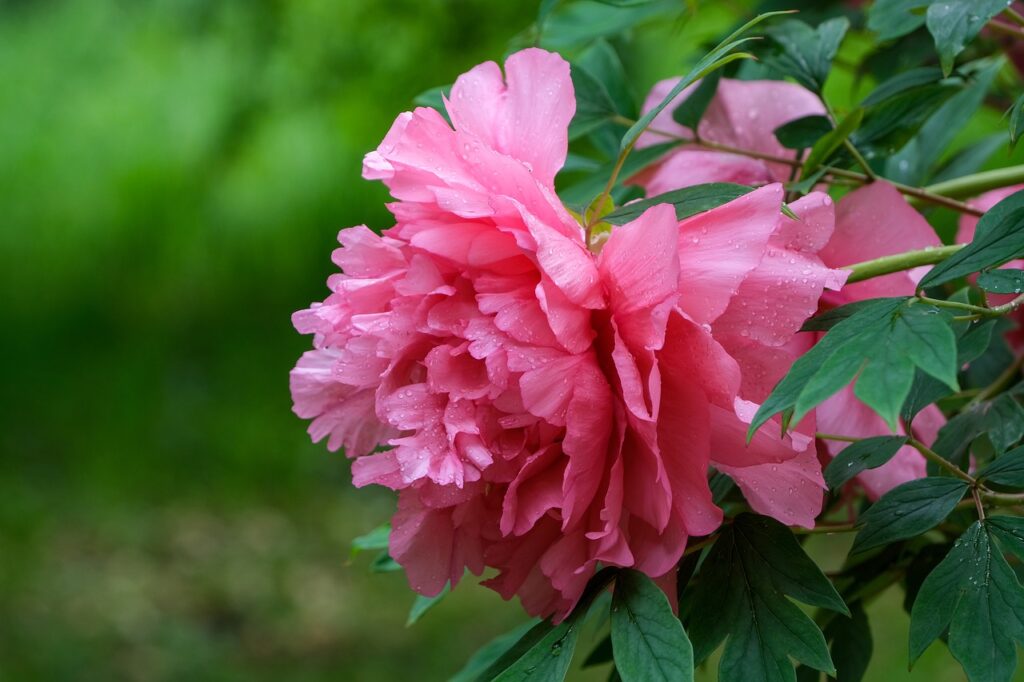
Image by Nicky ❤️🌿🐞🌿❤️ Are Peonies Poisonous to Cats?
Alternatives to Planting Peonies: Safe Flowers for Cat Owners
If you love to garden but want to ensure your cat is safe, here are some non-toxic options for you to try:
Cat-Friendly Flowers:
Roses (Rosa spp.): So pretty, and non-toxic for your cat.
Snapdragons (Antirrhinum spp.): Brilliant for adding some color to your garden.
Sunflowers (Helianthus spp.): Cheerful, with absolutely no danger to your pet.
Zinnias (Zinnia spp.): Tough but vibrant.
Cat-Friendly Indoor Plants:
Spider Plant (Chlorophytum comosum): Favorite among playful cats.
Parlor Palm (Chamaedorea elegans): Adds greenery without danger.
Calathea: A non-toxic ornamental leaf plant.
Herbs and Grasses:
Catnip (Nepeta cataria): Your cat will be in heaven.
Lemongrass (Cymbopogon): Non-toxic and fragrant.
Cat Grass: Very effective in satisfying your cat’s urge to chew on something.
Planting these species in your garden will color up your space while keeping your pet safe.
Tips for Pet-Friendly Gardening
Creating a garden that’s safe for cats doesn’t mean giving up on aesthetics. Here are some tips to maintain a balance:
- Research Plants Before Planting:
Familiarize yourself with the toxicity levels of plants before introducing them to your garden. - Designate a Safe Zone:
Create a specific area in your garden with non-toxic plants and grasses where your cat can roam freely. - Use Barriers:
Place physical barriers, such as fences or raised garden beds, to keep your cat away from toxic plants. - Supervise Outdoor Time:
If your cat spends time outdoors, keep an eye on them to ensure they’re not munching on harmful plants.
Conclusion: Prioritizing Your Cat’s Health Around Decorative Plants
While peonies add significant beauty to any garden, they do create a minor danger to your cat’s health. Understanding the level of toxicity posed by peonies and being able to identify the poisoning symptoms are paramount in keeping your feline companion safe.
With a little planning and a focus on non-toxic plants and some basic preventive measures, you can make your home beautiful and safe for your pet. And if you suspect your cat has ingested a toxic plant, don’t hesitate to reach out to a veterinarian for advice.
It’s worth taking that little extra effort for your cat’s well-being, and with just a little planning, you can have the best of both worlds: a great, thriving garden and a happy, healthy pet.
Are Peonies Poisonous to Cats?
Yuns Legdm is a passionate advocate for pet care and the founder of this website, dedicated to providing valuable information for fellow pet lovers and veterinary professionals worldwide. With a deep love for animals, Yuns created this platform to connect passionate pet owners with expert insights from veterinarians around the globe.
This website grows with you—the passionate pet owners and veterinary experts—creating a trusted space where knowledge, experience, and love for animals come together. Whether you’re seeking advice on pet health, nutrition, or general well-being, this platform is here to support you on your journey of responsible and loving pet care.

